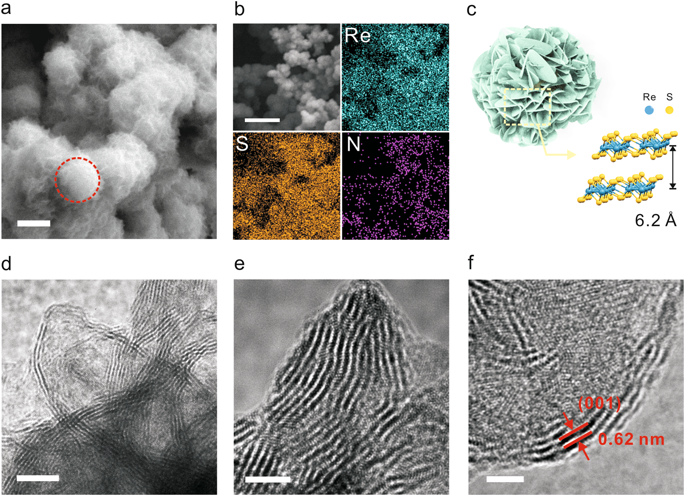npj 2D Materials and Applications ( IF 9.1 ) Pub Date : 2018-08-06 , DOI: 10.1038/s41699-018-0068-0 Qin Zhang , Zemian Ren , Nian Wu , Wenjie Wang , Yingjie Gao , Qiqi Zhang , Jing Shi , Lin Zhuang , Xiangnan Sun , Lei Fu

|
Transition metal dichalcogenides (TMDs) are promising for spintronic devices owing to their spin-orbit coupling and loss of inversion symmetry. However, further development was obstructed by their intrinsic nonmagnetic property. Doping TMDs with non-metal light atoms has been predicted to be a good option to induce unexpected magnetic properties which remain rarely explored. Here, we utilize nitrogen doping to introduce magnetic domains into anisotropic ReS2, giving rise to a transition from nonmagnetic to tunable magnetic ordering. Both of the experimental and computational results confirmed that the N-doping in ReS2 prefers to take place at the edge site than in-plane site. With controlled doping concentration, it exhibits a unique ferromagnetic-antiferromagnetic (FM-AFM) coupling. Assisted by theoretical calculations, we demonstrated that FM-AFM coupling presents a strong link to doping contents and doping sites. Wherein, the FM ordering mostly comes from N atoms and the AFM ordering originate from Re atoms. At the N-doping content of 4.24%, the saturated magnetization of N-doped ReS2 reached the largest value of 2.1 emu g−1 at 2 K. Further altering the content to 6.64%, the saturated magnetization of N-doped ReS2 decreases, but exhibits a distinct exchange bias (EB) phenomenon of around 200 Oe. With controlled N-doping concentrations, the intrinsic spin in ReS2 could be well altered and resulted in distinct magnetism, presenting tremendous potential for spintronic devices in information storage.
中文翻译:

氮掺杂在ReS 2中感应出可调节的磁性
过渡金属二卤化物(TMD)由于自旋轨道耦合和反对称性的丧失而有望用于自旋电子器件。但是,其固有的非磁性质阻碍了进一步的发展。据预测,用非金属轻原子掺杂TMD是诱发意想不到的磁性能的好选择,这种磁性能很少被探索。在这里,我们利用氮掺杂将磁畴引入各向异性的ReS 2中,从而引起了从非磁性到可调谐磁性排序的转变。实验和计算结果均证实,ReS 2中的N掺杂宁愿发生在边缘站点,而不是发生在平面站点。在受控的掺杂浓度下,它表现出独特的铁磁-反铁磁(FM-AFM)耦合。借助理论计算,我们证明了FM-AFM耦合呈现出与掺杂含量和掺杂位点的紧密联系。其中,FM有序主要来自N原子,而AFM有序主要来自Re原子。N掺杂含量为4.24%时,N掺杂的ReS 2的饱和磁化强度在2 K时达到最大值2.1 emu g -1。进一步改变含量为6.64%,N掺杂的ReS 2的饱和磁化强度。减少,但表现出约200 Oe的独特的交换偏差(EB)现象。通过控制N掺杂浓度,ReS的固有自旋可以很好地改变2并产生明显的磁性,这为自旋电子设备在信息存储中提供了巨大的潜力。











































 京公网安备 11010802027423号
京公网安备 11010802027423号